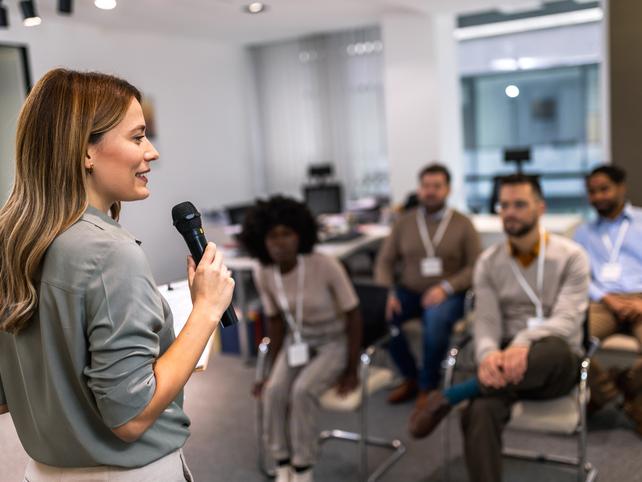It’s one thing to present your research to other academics, who share a similar level of passion for and expertise in your field. You can use technical language and complex equations, and you’re unlikely to need to spend much, if any, time explaining the basic principles that your own work is based on.
But what about presenting your research to a non-academic audience? That brings a whole new set of challenges and demands a particular level of adaptability. You don’t want to confuse them if they’re not familiar with the technical aspects of your field, and you don’t want to lose their interest by going on about things that aren’t relevant to them. But at the same time, you don’t want to avoid talking about your research – it’s an excellent way to inspire people, to get them interested in concepts that are still being developed and refined, and to inform them of how these concepts might impact and benefit their lives in the future.
- Get the word out: four ways to communicate with non-academic audiences
- Tips for sharing research findings with diverse audiences
- Researchers: fight back against your struggle with self-promotion
This is something I am especially passionate about, and during my academic career I have used a range of techniques when sharing my research with non-technical audiences. Whether it’s a YouTube video or blog post that’s accessible to the general public, or an in-person talk at a school or university, I adapt what I say and how I say it to suit the audience, their (presumed) existing knowledge and their level of interest in my field.
Put it in context
One of the first things I do is explain the context of my research. Where did it all start? What ideas came before mine? As researchers, we build on the insights and discoveries of those who came before us; we “stand on the shoulders of giants,” as they say. So, surely it would be better for a non-academic audience to first learn about the Big Ideas that those giants pioneered, instead of being told, without much context, about the niche concepts that I am researching.
One way I like to do this is to talk about the history of those ideas and the people who developed them. Explaining the big picture is often a necessary step towards helping the audience understand my own work. So why rush it? Give them time to appreciate these foundational concepts.
By talking about the history and people behind the Big Ideas, I can also start to build a narrative or story into my presentation, and that, in turn, helps to keep the audience’s attention. This is particularly important, I think, when speaking to people whose attention may be harder to capture – a group of pupils who were required to attend a school event, for example. I want them to want to listen to me, not feel obliged to do so out of politeness.
Gamify to engage your audience
Storytelling is not the only way I go about keeping my audience engaged. I also like to get them involved in some way, to make them feel part of the presentation by making it interactive.
I find puzzles and games to be particularly effective. For example, I like to talk about the fundamentals of optics using a puzzle involving a farmer trying to help a cow that got stuck in a canal.
Alternatively, if the situation allows it, I let the audience form pairs and play games against each other. A simple game could involve starting with a number of counters on the table, with the players taking turns to remove either one or two counters at a time. The player who takes the last counter wins. After a few rounds, I ask them if they can find a strategy that will guarantee a win. Formulating a strategy naturally leads to mathematical concepts – in the game I just described, the key is to keep track of whether or not the number of tokens on the table is divisible by three.
Another example that’s particularly relevant to a school audience is to get them solving a problem that, on the surface, seems more complex than what they are used to. For example, a geometry problem that can be solved with trigonometry in the curriculum, but with a more complicated set-up than they may have come across before. The end goal is to find a formula for a certain angle.
My strategy here is to ask questions that allow pupils to make a link with the curriculum (for example, “Do you know any functions that link angles and distances?”, or “Can you spot any special triangles in this drawing?”). Such questions allow them to think of good mathematical tools for the task at hand, without putting them under pressure to solve the problem on the spot.
What these examples have in common is that they focus more on problem-solving, on the process of figuring out a solution, than on the solution itself. If my audience can appreciate how a mathematical concept works in practice, this is a great way for them to better understand my research and other aspects of the wider field. And who knows? I may have just inspired the next generation of researchers.
Mats Vermeeren is a research fellow and mathematics lecturer at Loughborough University.
If you would like advice and insight from academics and university staff delivered direct to your inbox each week, sign up for the Campus newsletter.




comment